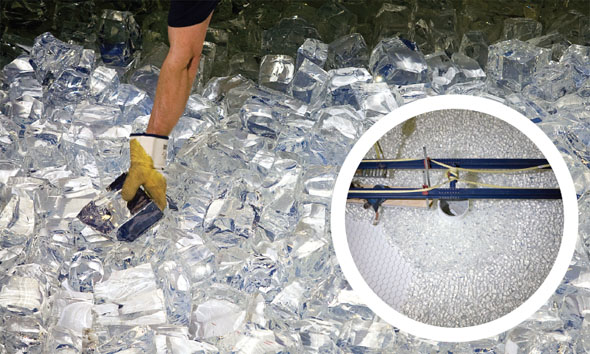Science worth trudging for
 |
|
| Photos: Mark Thiessen, National Geographic | |
Would you walk 10,000 steps for a piece of glass the size of a deck of cards?
What if that piece of glass were part of an astrophysics experiment to warn people about potentially deadly asteroids zooming toward Earth and make a 3D map of the universe? And wait, there's more! What if the glass came from part of the world's largest combined primary and tertiary telescope mirror?
Steve Souza thought the “small vicarious thrill of being connected to a great enterprise by the thinnest possible of threads” was more than worth the exercise.
In a break from the tradition of limiting keepsakes to VIPs, Souza and nine others beat out eight dozen energetic competitors to win a chunk of glass produced for the mirror of the Large Synoptic Survey Telescope.
These particular chunks of ultrapure borosilicate glass had failed an exacting inspection process at the University of Arizona. So they became contest prizes at a recent American Astronomical Society meeting: attendees who walked 10,000 steps had their names entered in a drawing to win their own piece of astrophysical history.
The 51,900 pounds of glass that did pass inspection were dumped into a mirror mold (photo) and heated to 2125 degrees Fahrenheit. A 39-foot-diameter rotating furnace used centrifugal force and a 100-day slow-cooling process to create the curved mirrors from molten glass. Grinding and polishing will smooth the mirrors down to 35,900 pounds and make them optimal for catching dim light from distant galaxies to study dark matter and dark energy, as well as catch quickly changing objects such as exploding stars. LSST is the follow-up experiment to the Dark Energy Survey, which will start taking data in 2012.
LSST's complicated fabrication and polishing methods captivated Sarah Yost, who works with optical images and has visited large telescopes. Like Souza, she successfully competed for a piece of glass: “I thought it would be really neat to have something that is part of those processes.”
Tona Kunz
Click here to download the pdf version of this article.






